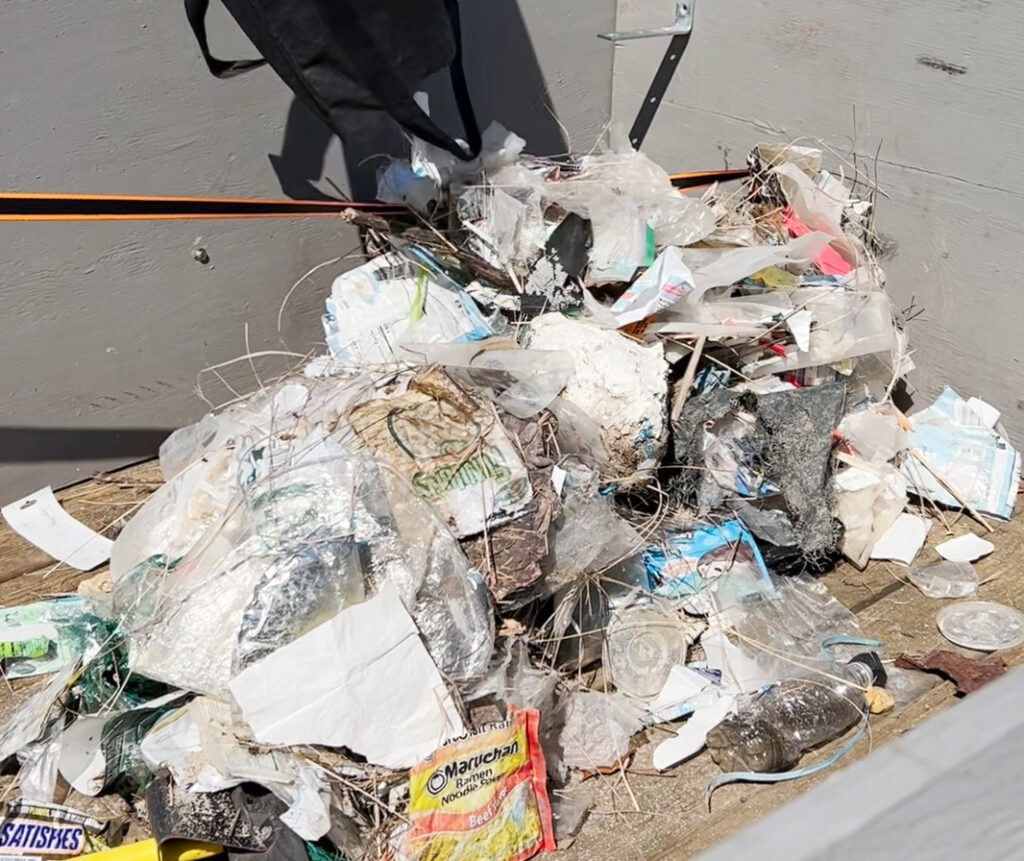County unveils ‘significant’ $4B plan to address nitrogen pollution

Suffolk County officials last week unveiled a $4 billion plan they say will serve as a blueprint for transitioning away from traditional cesspools, which have been identified as a main culprit of nitrogen pollution in ground and surface waters.
Approximately 74% of county residents rely on “antiquated” on-site wastewater disposal systems. Cesspools were outlawed in new construction in 1973 and, as of July 1, legislators amended the county sanitary code to close a loophole that allowed existing cesspools to be replaced with newer models of the same technology.
The Subwatersheds Wastewater Plan calls for the elimination of more than 253,000 cesspools countywide, either by replacing them with innovative or alternative wastewater systems, known as IA, or by connecting properties to existing and expanded sewer districts. The plan would be implemented in four phases over the next 50 years.
Officials say that if the plan is implemented, worsening water quality trends could begin to reverse within 10 years.
“This plan represents the first meaningful strategy to address legacy septic nitrogen pollution since countywide sewering objectives were abandoned some four decades ago,” said Walter Dawydiak, director of environmental quality for Suffolk County.
County Legislator Al Krupski (D-Cutchogue) said the plan is “significant” and “will serve as an invaluable tool as we move forward” in cleaning local waters.
Scientific data shows that nitrogen pollution is the main driver behind harmful algal blooms and fish kills, and threatens Long Island’s drinking supply, which comes from a sole-source aquifer.
Data from a 2010 Suffolk County Comprehensive Water Resources management plan shows that between 1987 and 2005, nitrogen levels in the upper glacial aquifer increased by 40%. During the same period, levels in the magothy (lower) level rose by 200%.
Health officials estimate that 70% of the nitrogen found in local waterways can be attributed to 360,000 cesspools and septic systems across Suffolk County.
Stormwater runoff and lawn fertilizers also contribute to nitrogen pollution.
Joyce Novak, executive director of the Peconic Estuary Program, described the plan as a “giant leap” toward a healthier ecosystem and cleaner waters in the Peconics.
“The Peconic Estuary is a system driven in large part by groundwater,” she said Friday. “Based on sound science, this new plan outlines a clear strategy for addressing nitrogen input to our bays and coastal waters via groundwater pathways,” thus enabling a more targeted approach to reducing nitrogen.
A key component of implementing the plan’s recommendations will be identifying a $50 million annual funding source that will make new systems or sewer connections affordable for residents. The plan references measures taken in other states, such as the Bay Restoration Fee in Maryland and fees on water consumption in Spokane, Wash., as examples county lawmakers could follow.
During Phase I of the plan, which would run until 2023, officials estimate that 5,000 cesspools would be replaced through a continuation of the county’s current voluntary program. An additional 5,000 homes along south shore waterways would be connected to sewer districts as part of the post-Sandy Suffolk County Coastal Resiliency Initiative. It’s also estimated that approximately 4,000 new construction units would be required to install IA systems.
All work in this phase could be funded through existing grant sources, officials said, including $440 million in federal and state funding the county has already been awarded and an anticipated $95 million in grants for IA technology.
The management plan also calls for amendments to the county sanitary code that would require the use of new IA systems in all new construction starting in 2020 and the creation of a countywide wastewater management district. In addition, the plan recommends that lawmakers include a stipulation that septic systems be replaced when properties are expanded or sold and when existing systems fail.
In Phase II, 177,000 cesspools and septic systems in high-priority areas, identified in the plan as low-lying coastal areas, would be eliminated between 2024 and 2054 at an estimated cost of $1.9 billion.
Phase III calls for upgrades in other low-lying priority areas over 15 years at a total cost of $730 million.
Phase IV, which extends to 2068, would cover all remaining areas in the county at a projected cost of $1.3 billion, bringing the overall cost of the program for all phases to $4 billion.
Environmental advocates applauded the plan, which is currently undergoing a detailed environmental review by the county Council on Environmental Quality. A 30-day public comment period is set to open Aug. 14, and public hearings are planned for Thursday, Aug. 29, at 6 p.m. in eastern Suffolk County and Thursday, Sept. 5, at 3 p.m. in western Suffolk, a health department spokesperson said. The locations are still being finalized and will be published within two weeks on the Suffolk County Council on Environmental Quality website.
“While I have spent my career documenting the degradation of Long Island’s fisheries and aquatic habitats, it is inspiring to finally see a plan designed and implemented that will reverse course on decades of negative trajectories,” said Christopher Gobler, chair of coastal ecology and conservation at Stony Brook University.
Adrienne Esposito, executive director of Citizens Campaign for the Environment, said the plan can help reverse decades of damage.
“It doesn’t just identify and characterize the problem, it sets forth an ambitious plan to solve the problem,” she said in a statement. “The lack of infrastructure to treat sewage is making our island polluted and unsustainable. We now have the road map to restore surface water quality within 10 years of implementing wastewater treatment upgrades.”
The plan is largely dependent on the growth of the burgeoning IA industry.
Currently, some Suffolk County residents are voluntarily testing such systems through a county grant program established to offset the cost of installing the systems, which can cost upwards of $20,000 and require more maintenance than traditional cesspools and septic systems.
During a presentation before the Riverhead Town Board in September 2018, Justin Jobin, an environmental project coordinator with the Suffolk County Department of Health Services, noted that six systems have been provisionally approved for use in Suffolk County.
He provided provisional results of sampling conducted last year, which showed that some of the approved systems were struggling to reduce wastewater nitrogen content to the mandated maximum of 19 milligrams per liter. One system made by Orenco averaged 32.3 milligrams per liter of nitrogen during the sampling period, though the data was limited.
“You can’t draw a lot of scientific conclusions off of one system,” Mr. Jobin said during the presentation.
He also noted that the systems perform better in warmer weather.
Health department officials said the Orenco system has since improved to 21.9 mg/L and further improvement is expected.
Additional nitrogen reductions in initially underperforming systems were attributed to adjustments made to the systems’ operation and maintenance.
For 2018, the cumulative average performance for all six approved systems was 17.8 mg/L, officials said.
Despite the mixed results, Ms. Novak said the systems have led to a remarkable reduction compared to traditional septic systems, which release an average of 60 milligrams of nitrogen per liter.
“Suffolk County cannot approve any system that is above 19 mg/L, but what is being achieved here with nitrogen reduction is great news for a future of clean water,” she said.
The plan was developed based on findings from two studies: the Smarter Cities Challenge report, prepared by IBM in 2014, and the Suffolk County Comprehensive Water Resources Management Plan, completed in 2015.
Funding for development, which began in 2016, came from the New York State Department of Environmental Conservation and brought together a multitude of stakeholders.
“The fight to reverse decades of nitrogen pollution from outdated cesspools and septic systems has created a unity of purpose among scientists, business leaders, environmentalists, the building trades and organized labor,” County Executive Steve Bellone said in a statement.
But Mr. Bellone also stressed the need to allocate funds: “No plan to reverse nitrogen pollution will be successful unless policymakers find a way to make it easy and affordable for homeowners.”









